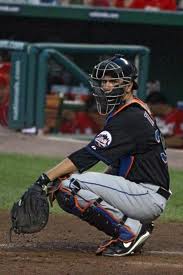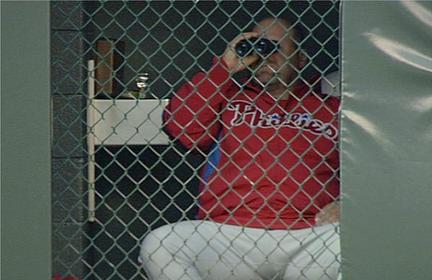The ethics of stealing signs
January 30, 2013 by Coach McCreary
Filed under Coaching
At a recent coaching clinic, a speaker (Seton Hall University pitching coach Phil Cundari) spoke about how unethical he thought stealing signs were. He is an impressive coach and worth hearing if you get the chance.
Before I give you my point of view, let’s just get this on the table first. I’ve never met a pitching coach who was NOT strongly against stealing signs. Pitching coaches (almost always former pitchers) are very protective of their craft and usually have a natural bias towards favoring things that benefit pitchers. Encouraging pitchers to throw up-and-in to knock
hitters down or at least back them away from the plate, teaching the balk pickoff move, and showing a pitcher how to use a scuffed ball are three examples of how their ethics can suddenly change when it benefits pitchers. Ask a hitting coach what the ethics of stealing signs, knocking hitters down, using a scuffed ball, and the balk move are and you are likely to get polar opposite opinions from a pitching coach. Both sides are like the cat and dog relationship. Two very different world views.
If you’ve seen my background on the Bio page, you’ve noticed that in my career as a player and coach, I’ve been both the cat and the dog at different points. With regards to stealing signs, here is my point of view for what it’s worth.
Sign stealing is perfectly ok as long as it follows these two rules:
1. It is done in the normal course of play.
By this I mean that the signs can clearly be seen by the naked eye without much effort at all. When a runner takes his lead at second base, he can clearly see the catcher’s signs. Because he is facing home plate, they are staring him right in the face. If he is a base stealer with a pitcher on the mound who bounces his curve ball, do you really expect a runner to see the curveball sign and NOT use that pitch as a good time to steal third base? The same thing goes for runners at first base. When he takes his lead, he is squared up to home plate and often can clearly see the catcher’s signs. If he can see them, should he ignore that information? If I’m pitching, I don’t care if runners try to get my signs. If the runners are able to do this, multiple people on my team are not doing their job. The catcher and I are not mixing our signs well enough with runners at second nor are we correctly hiding them from runners at first. The first baseman is not telling the catcher that he can see his signs at first base. The shortstop and second baseman are not keeping the runner busy enough or not noticing that the runner at second is flashing the signs. As the pitcher, I’m at fault if I throw the pitch knowing that the batter may know what’s coming. The coaches have obviously not taught the players how to do all this either. Basically, if the defensive team is doing their job, stealing signs under normal conditions won’t work so who cares if they try?
For those pitchers who might disagree with me, think of it this way. If your shortstop noticed a flaw in the on-deck batter’s swing that would make him susceptible to an outside pitch, would you be ok with your teammate coming to the mound and telling you? You probably would, right? I don’t see that as any different as telling a batter information that came from noticing a mistake by the catcher either.
Note: At the lower levels, it is likely that I would tell the opposing coach that we are able to see the catcher’s signs. At those levels, the players and the coaches are still learning the game.
For me, the line is drawn when technology is used. Cameras, cell phones, and/or binoculars set up somewhere in centerfield or the stands to zoom in on catcher’s signs and/or relay them does not qualify as “seeing with the naked eye” or “normal conditions.” Any use of technology in real-time is a no-no in my book. Having a player lay down in
the dugout to get a better under-the-leg view of the catcher’s signs (I’ve actually seen this) is a no-no as well. That is also not “normal conditions.”
2. It doesn’t break a rule.
Using video equipment in the dugout to view opposing players in real-time is against the rules so that’s a no-no. Coaches who stray from the coaching boxes and move closer to the foul line to get a better angle on catcher’s signs is illegal as well so that’s a no-no in my book also. Any information gained by violating a rule is no good.
Those are my views and it’s ok if you disagree.
How do you feel about all this? Share in the comment section.







Leave a Reply